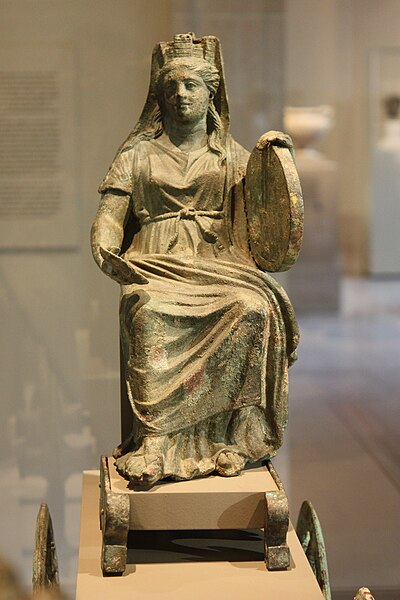A mural crown is a crown or headpiece representing city walls, towers, or fortresses. In classical antiquity, it was an emblem of tutelary deities who watched over a city, and among the Romans a military decoration. Later the mural crown developed into a symbol of European heraldry, mostly for cities and towns, and in the 19th and 20th centuries was used in some republican heraldry.
Depiction of Darius the Great wearing an early mural crown on the Behistun inscription
Mural crown on city goddess (silver tetradrachm issued by Smyrna, 160–150 BC)
The Tyche of Antioch, Roman version of a 3rd-century BC bronze by Eutychides
A tutelary is a deity or a spirit who is a guardian, patron, or protector of a particular place, geographic feature, person, lineage, nation, culture, or occupation. The etymology of "tutelary" expresses the concept of safety and thus of guardianship.
The mural crown of Cybele represents the walls of the city she protects
Lararium depicting tutelary deities of the house: the ancestral Genius (center) flanked by two Lares, with a guardian serpent below
Stone doors of a tomb of the period of the Northern Dynasties to Tʻang Dynasty, excavated in Ching-pien County of the city of Yü-lin, Shensi Province. It shows two figures with tridents as the guardian deities of the tomb.
A Thai spirit house for the Chao Thi in front of a car dealership in Bangkok







